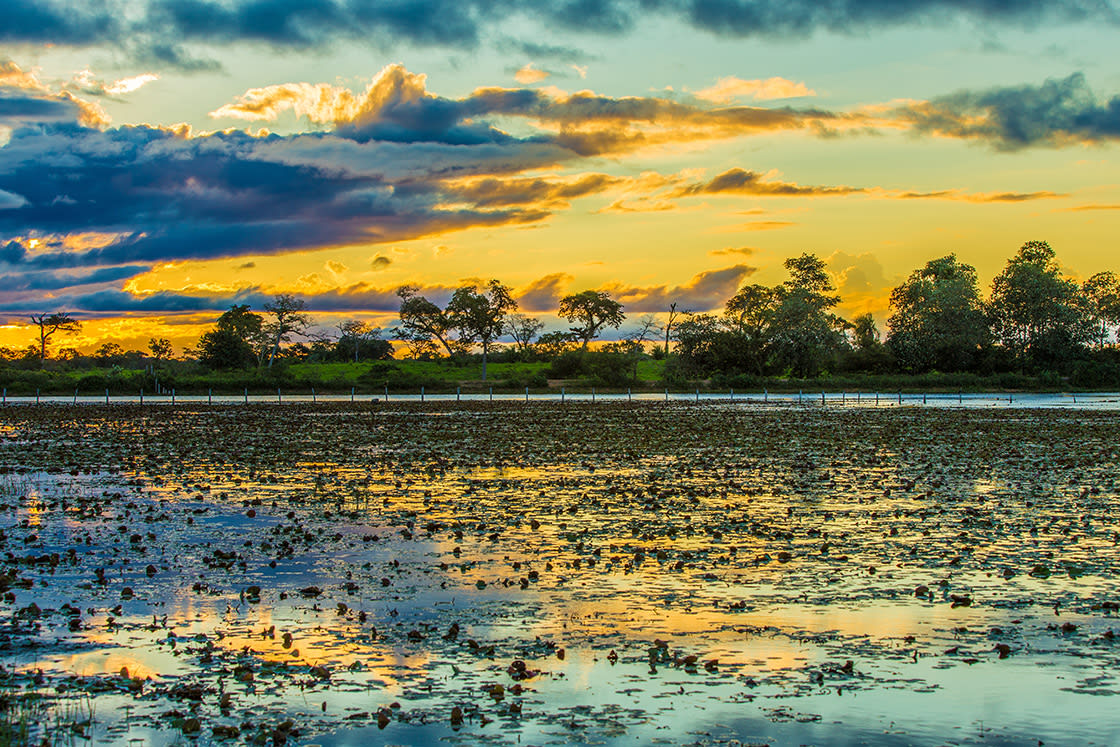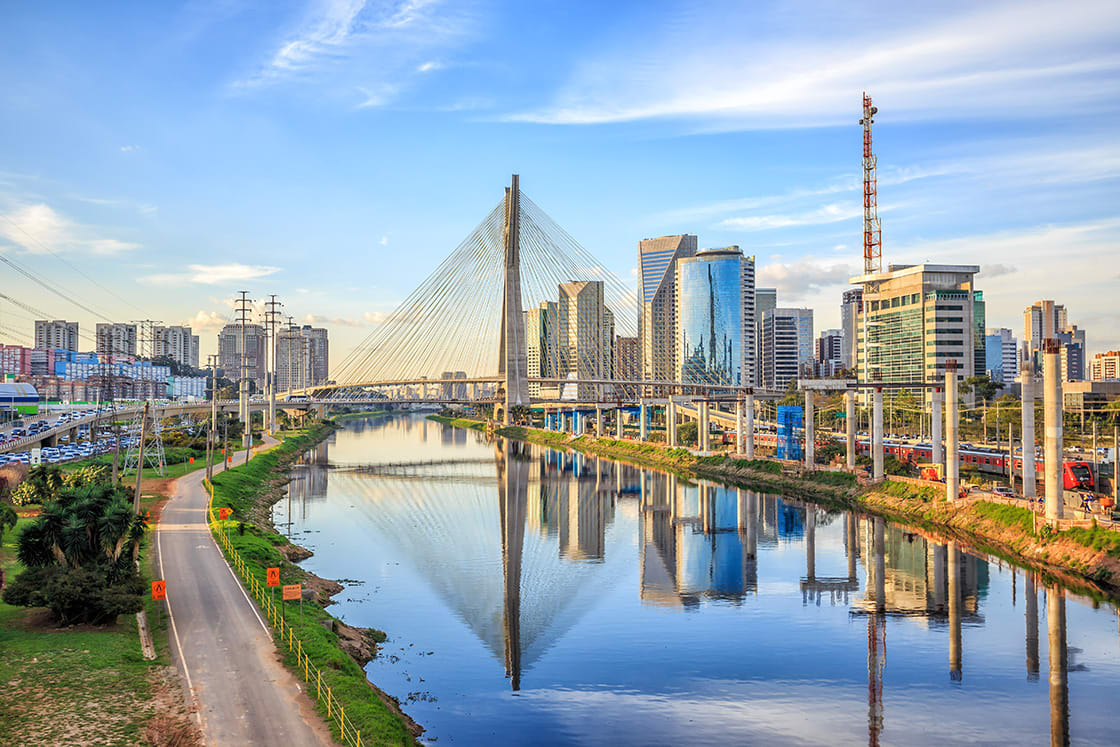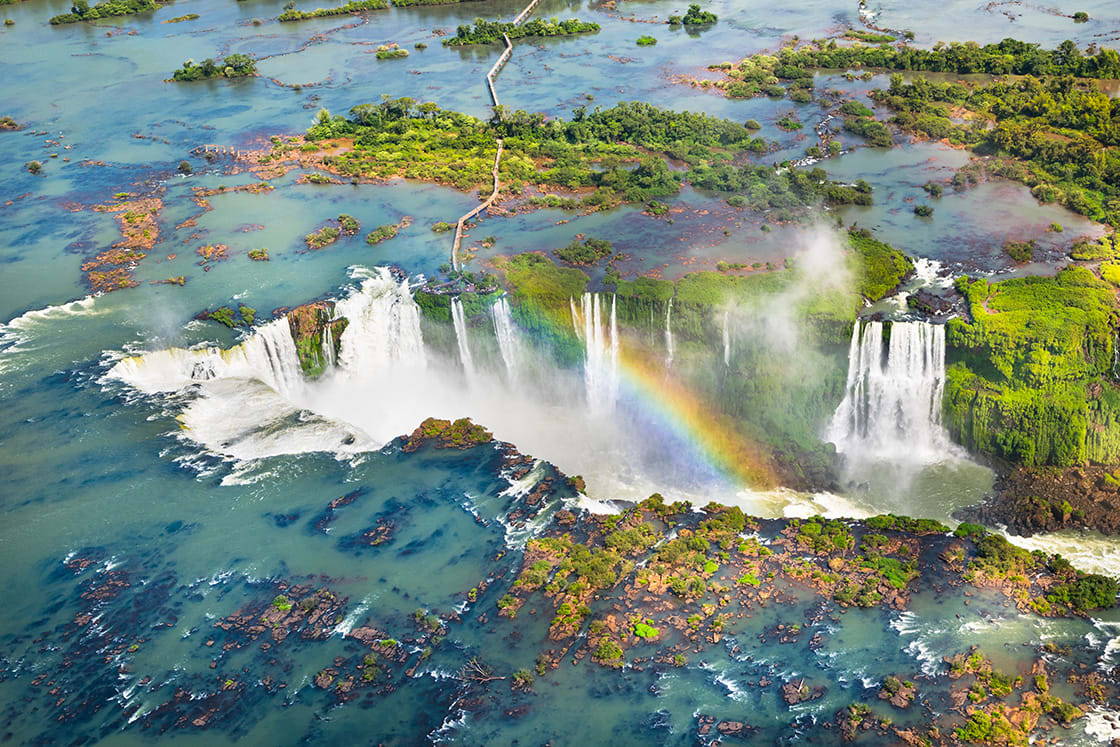
Summertime in Brazil is from December through March, and winter is June through September but the further north you go, the higher the temperature and the humidity. In fact, the Northeast is too hot to have a winter. Overall, the months of September and October are the best time to vacation in Brazil, as you will avoid the major holiday periods as well as the chilly southern winter and the rainy season in the Pantanal. However, the regions that you are visiting will dictate the best time to go to Brazil.

Highwater Season in the Brazilian Rainforest
The Amazon, which is the northern one-third of the entire country, is sweltering year-round and stereotyped as a steamy jungle. This region is very wet, with the rainy season lasting five and a half months and seeing a lot of rain, every few hours, with constant rainfall, and floods from January to May. If you want to tour the Brazilian Amazon, the best time would be June through September before the rainy seasons start, while the absolute best time is in July and August.

Colorful Sunset in Pantanal
The Pantanal region, which is a paradise for bird and animal watching, has a consistent temperature throughout the year. It looks like an African savannah at the peak of the summer or an immense lake during the rainy season. The most rain falls from December to March with very high temperatures and a lot of flooding. The best time to visit the Pantanal and see the animals is during the winter months of July through September/October. This is considered the dry season.

Sugar Loaf, Rio de Janeiro
The best time to visit Rio is in the summer months from December to March. The rainy season brings on a lot of rain. Even in winter or the rainy season, the weather will be sunny much of the time, with rain usually falling in intense but short bursts.

Octavio Frias de Oliveira Bridge in Sao Paulo, Brazil
Even though Sao Paulo is in the south of Brazil, it shares some of the same climates as Rio de Janeiro, especially along the coast. The interior of Sao Paulo is on a plateau and the climate goes along with the climate regions to the center and the south. Sao Paulo has nice temperatures and good weather in the summer, albeit humid. The winters are cold.

View of a Catholic Church, state of Rio Grande do Sul, Brazil
This region has four seasons. The summers are hot and the winters are cold. Here, there’s a distinct winter between June and September, with occasional cold, wind, and rain. The coldest part is the interior of Rio Grande do Sul, in the extreme south of the country, but even here there are many warm, bright days in winter, and the summer is hot. The best tourist time is in the summer when the beaches are inviting.

Beautiful Aerial View Of Iguazu Falls
December is the high season and among the wettest months, especially in the Amazon Basin. Expect hot and humid conditions as summer beckons. Christmas holidays and warm weather push up prices. In January, while the climate can change across its diverse regions, the average temperature usually hovers in the early 80s. It’s a good time to visit Sao Paulo and Rio with slightly drier weather conditions. February is one of the hottest months in Brazil. The average temperature is usually in the mid-80s, which makes it the perfect time to hit the beaches. Crowds and prices peak for the Rio Carnival, which takes place in February or early March in accordance with the beginning of Lent. In March you should expect warm, humid weather throughout the country as the high season begins to wane. Be prepared for the occasional summer storm. The higher volume of water at this time makes a visit to the Brazilian side of the Iguazu Falls a memorable experience.
In April, while the weather along the coast remains largely warm and dry, temperatures begin to fall as you move south, heralding the gradual arrival of winter. May marks the start of the low season in Brazil. The average temperature is usually around the early 70s. This is usually the last month to head to the south of the country before winter properly sets in. June brings blue skies and pleasant temperatures – the day temperature averages 71°F. It is one of the coolest months of the year and among the driest months as well, making June – and the next few months – the perfect time to cruise through the Amazon rainforest. The higher up and the further south you get, the chillier the temperatures become with several resorts shutting for the winter. July is the coldest month in Brazil, but temperatures rarely dip below the high 60s. While it’s still warm enough to swim in the coastal areas, you could expect to see snow in the south.

Jaguar Walks Along The Sand, Pantanal
August is one of the best times to visit Brazil due to the comfortable spring temperatures and lack of rain. This month can be exceptionally busy thanks to the influx of visitors from the Northern Hemisphere. Temperatures continue to rise in September, as does the humidity. Expect cloudy skies and rain showers towards the end of the month in Rio. September and October are usually seen as the best months to visit Brazil, especially for jaguar spotting in the Pantanal. October is a month of transition in all the different climatic zones in the country. November finds temperatures and rain levels creeping up across the country. This is a fairly wet and warm month with the average temperature hovering around the mid-70s and not much difference between day and nighttime temperatures.
While Rainforest Cruises aim to provide accurate and up-to-date information, we make no representations as to the accuracy or completeness of any information herein or found by following any link on this site. Rainforest Cruises cannot and will not accept responsibility for any omissions or inaccuracies, or for any consequences arising therefrom, including any losses, injuries, or damages resulting from the display or use of this information.




